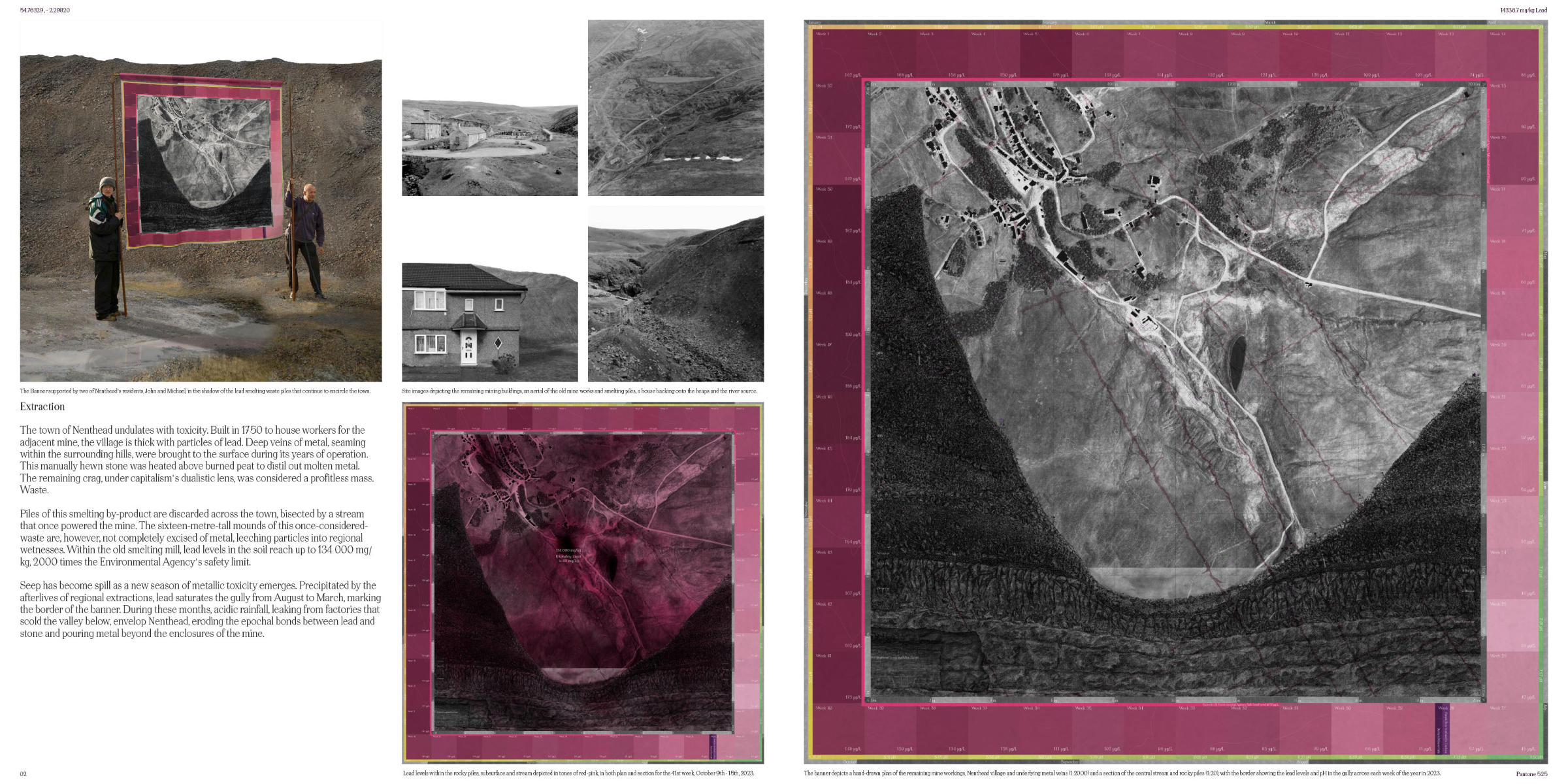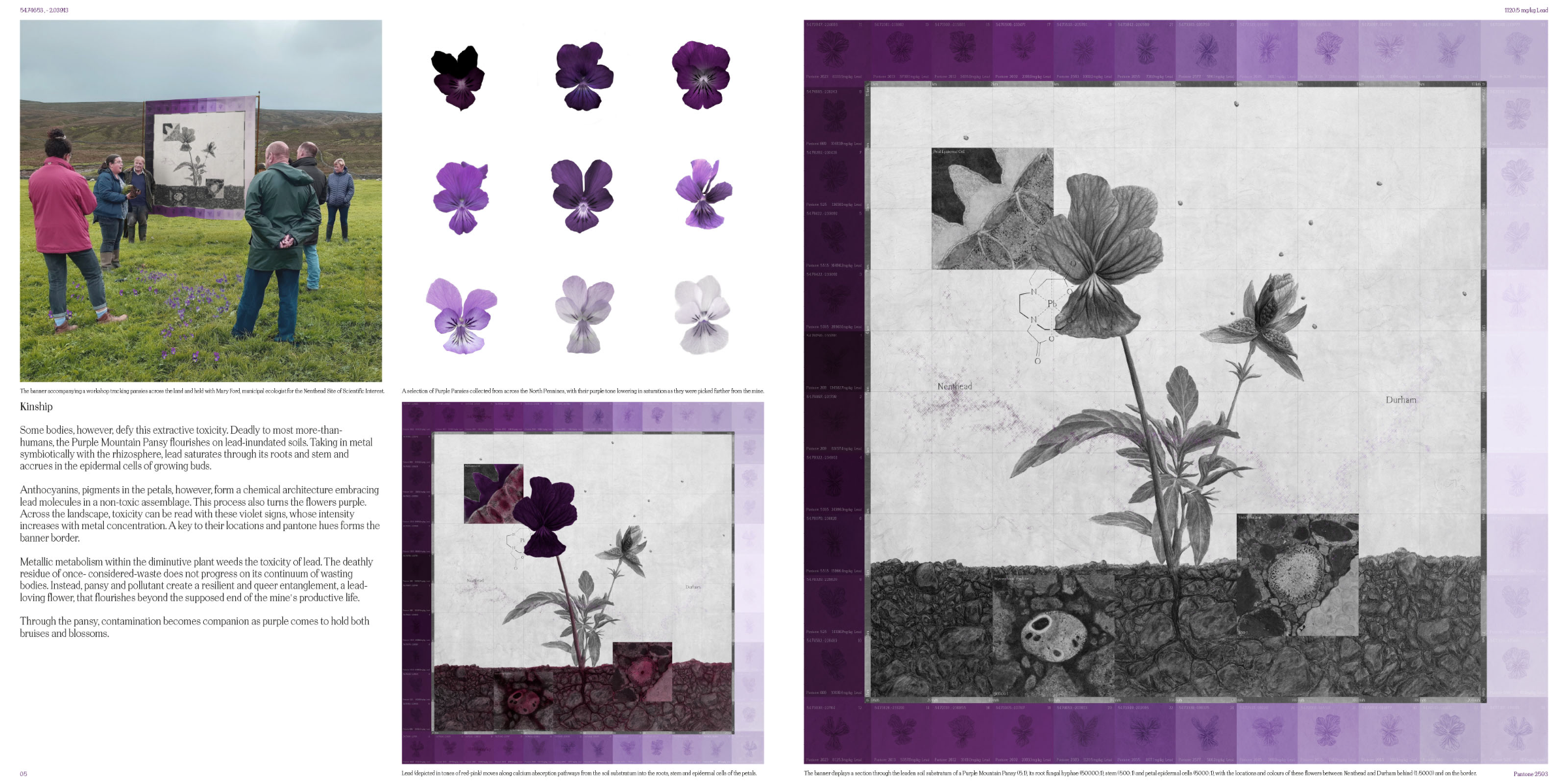max Cooper-clark
Architecture MA
Royal College of Art
Graduates: 2024
Specialisms: Architecture / Art History / Film & Animation
My location: London, United Kingdom


max Cooper-clark

First Name: max
Last Name: Cooper-clark
University / College: Royal College of Art
Course / Program: Architecture MA
Graduates: 2024
Specialisms: Architecture / Art History / Film & Animation
My Location: London, United Kingdom
Website: Click To See Website
About
Pits and Pansies traverses topographies of lead extraction and resistance in the North East of England. Steeped in the mine-town of Nenthead, it traces contaminated bodies and exhausted mines, hoping to unearth post-extractive sites as more-than-just-a-toxic leftover. They are spaces saturated by resilience, weirdness and intimacy, queer ecologies defying boundaries across kinships, normative acts of care and refusing notions of refuse. Pits and Pansies is a parade of banners and a film that carry together miners, gays, pansies, suffragettes and particles of metal. This parade shifts in polyphony, recited through the speech and skeletons of local residents, activists and co-conspirators. They include Vera Hutchinson, the head of the local community centre, Eric Lea, a retired lead miner, Mary Ford, a municipal ecologist, Mike Jackson, the co-founder of a queer activist group, Mabel Tuke, a suffragette named after a flower and myself, an architecture student who grew up near the mine. Step by step, this chorus presents a future where the procession threads performance with an assembly of instruments and purple flowers that make life with lead liveable. Pits and Pansies is both narrated and enacted by a series of ten fabric banners. Each 2 by 2m cotton banner is hand drawn in charcoal, stained with dyes made from purple mountain pansies, and screen and acetone printed with archive documents and photographs. They were all completed, in addition to the proposed structure, in collaboration with the community at Nenthead over a series of workshops, walks, interviews, group draws and meals. These banners were eventually paraded in the 2024 Durham Miners' Gala across the lead-inundated landscapes between Nenthead and Durham. They will return to the parade in 2025 with new drawings overlaid in palimpsest to reflect the fluctuating topographies and bodies touched by lead.
Competitions












